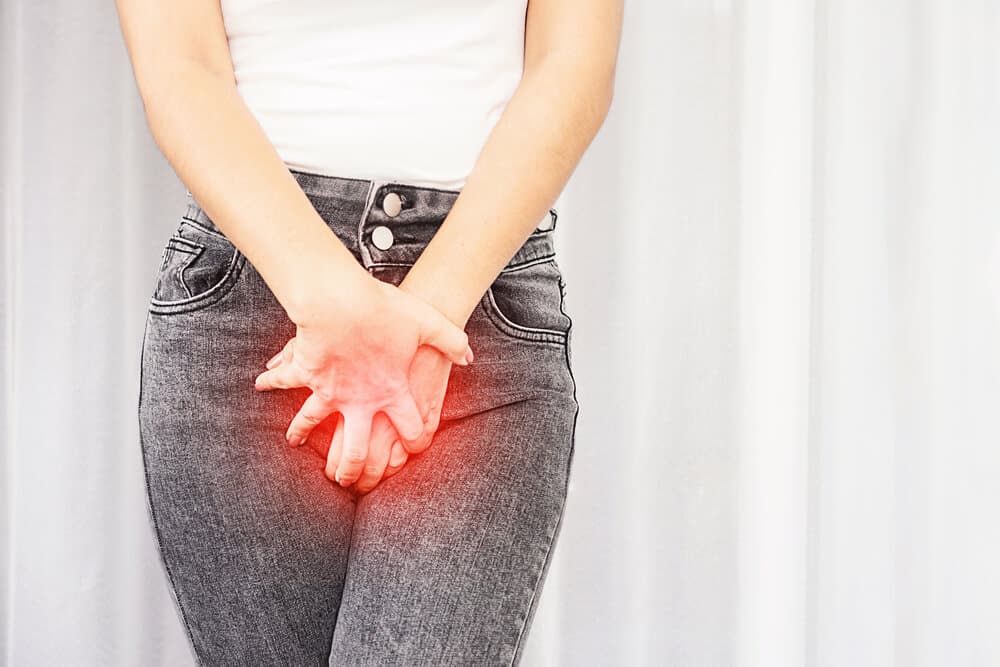Female candidiasis is an infection caused by a fungus that causes a lot of discomfort and discomfort but can be treated.
The call candidiasisalso known as genital candidiasis or female candidiasis It is a very common infection. And although it can also happen to men, it is a more common infection among women, affecting around 75% of them at least once in their lives.
This infection is caused by a fungus called Candida albicanswhich affects the intimate region. Therefore, the main symptoms of candidiasis are: intense itching in the genital region, as well as redness and burning and the presence of whitish discharge.
The causes are diverse, but it is more common among women due to the proximity between the urethra and the vagina, and also due to the imbalance of the vaginal microbiota. Furthermore, the chances of developing candidiasis are also greater when the immune system is weakened or due to hormonal changes. All of this can lead to the multiplication of the fungus in the intimate region, which leads to the emergence of candidiasis.
Therefore, when noticing any of the symptoms, it is essential to see a gynecologist, to obtain a diagnosis and, if applicable, to begin treatment, which can be done with antifungal ointments and tablets.
What are the symptoms?
As it is an infection caused by fungi, female candidiasis can cause a lot of discomfort in the intimate region as well as other characteristic symptoms. In fact, these symptoms appear especially when a woman has low immunity:
However, even though these symptoms are characteristic of candidiasis, they can also be indicative of other gynecological problems and changes..
So, when you notice one or more of these symptoms, it is essential to see a gynecologist. This way, the professional will carry out the necessary tests and exams, such as a Pap smear, to determine the cause of the symptoms. And if the presence of the candidiasis fungus is confirmed, begin treating the infection.
What causes female thrush?
As previously stated, candidiasis is a very common type of infection. In fact, most women have experienced or will experience the condition at least once in their lives. It is caused by the fungus Candida albicanswhich naturally lives in the intimate region, but when it deliberately proliferates, it results in candidiasis and the appearance of symptoms.
Therefore, some factors can lead to an increase in the fungus and cause infection, among the main causes are:
- Frequent use of antibiotics, corticosteroids and contraceptives;
- Menstrual period;
- Wearing very tight and damp clothes;
- Pregnancy;
- Lack of intimate hygiene;
- Use of pads for long periods;
- Diseases such as diabetes, AIDS, HPV and lupus that make the immune system weaker;
In fact, a person can be infected with the candidiasis fungus and not know it.this is because symptoms only appear when the immune system is weak.
Treatment for candidiasis
Many people ask whether it is possible for female candidiasis to cure itself. The answer is no. This is because although it is not a serious infection or anything like that, it can be very unpleasant. Therefore, when noticing the symptoms of candidiasis, the ideal is to seek a specialist doctor, which in this case is the gynecologist who will recommend treatment.
Diagnosis is made through evaluation of symptoms, as well as exams and laboratory analyzes to identify the type of fungus that is causing the infection. Treatment is relatively simple, and the use of topical ointments and tablets may be indicated. Some of the most used active ingredients in this type of treatment are:
- Nystatin;
- Miconazole;
- Itraconazole;
- Candicort;
- Ketoconazole;
- Fluconazole.
In fact, during treatment, it is recommended to avoid sexual relations. Furthermore, in the case of recurrent candidiasis, it may be necessary to continue taking the medications weekly, for at least 6 months, or as advised by the doctor.
Oral tablets are effective in fighting the infection, but ointments applied to the region are more effective, because they reduce symptoms more quickly.
Homemade options and care
In addition to treatment with medications prescribed by your doctor, there are also home options that can help deal with the infection. The best option is to clean the intimate area with water and vinegar. Basically, 4 tablespoons of vinegar for half a liter of water.
Furthermore, some basic care can not only treat but even prevent female candidiasis:
- Keep the intimate area clean and dry, especially at night;
- Prioritize the use of cotton and looser clothing;
- Sleeping without underwear also helps;
- Ingest probiotics and lactobacillus, such as yogurt, for example;
- When washing the intimate area, use vaginal gel with a pH between 3.8 and 4.5;
- In addition to avoiding soaps and other chemicals in this area;
- Drink water with lemon during the day;
- Putting a little natural yogurt in the vagina also helps treat candidiasis;
- Food can also be a way to prevent infection, so the ideal is to avoid foods rich in carbohydrates, fat and sugar, which feed the fungus that causes candidiasis.
Other types of fungus
1. Male candidiasis (balanoposthitis)
Known as penile candidiasis or balanoposthitis, this candida fungus is not as common as the vulvovaginal fungus. In most cases, male candidiasis is caused by health problems, such as diabetes and poor hygiene.
2. Candidiasis in the mouth
To know if you have candidiasis in your mouth, pay attention to signs such as mouth ulcers and difficulty swallowing. This type can happen to children, the elderly, diabetics and adults.
3. Esophageal candidiasis
Also called esophagitis, esophageal candidiasis, unlike the others, is caused by the fungus Candida albicans. This disease is very rare and occurs mainly in patients with low immunity, such as those with AIDS and cancer.
4. On the floor (Intertrigo)
This type of candidiasis occurs mainly due to friction between the skin, creating small lesions, which provides the perfect environment for the proliferation of bacteria and fungi, such as the candidiasis intertrigo fungus. The parts of the body most affected by the disease are: the armpits, groin, buttocks, belly, neck, breasts, fingers and toes, as well as the inner thighs.
5. Invasive candidiasis
As it is an infection that affects more newborn patients and those with compromised immunity, invasive candidiasis ends up occurring more in hospitals. This type affects the bloodstream, therefore, it can affect any organ, such as the brain, spleen, kidneys and eyes, and cause serious complications. In very serious cases, it can develop into candidemia and be fatal.
READ MORE:
Candidiasis in men – Symptoms, main causes and treatment
10 recipes for home remedies for candidiasis
Home remedies for candidiasis – 8 recipes to alleviate symptoms.
Kefir: how to make yogurt that boosts immunity and fights candidiasis
Cranberry juice recipe helps fight candidiasis and urinary tract infection
Foods that worsen candidiasis: what not to eat
Bibliography:
- Ferrazza MHSH, Maluf MLF, Consolaro MEL, Shinobu CS, Svidzinski TIE, Batista MR. Characterization of yeasts isolated from the vagina and their association with vulvovaginal candidiasis in two cities in southern Brazil. Rev Bras Ginecol Obstet. 2005;27(2):58-63.
- Feuerschuette, Otto Henrique May; Silveira, Sheila Koettker. Recurrent vaginal candidiasis: clinical management. Available at: https://pesquisa.bvsalud.org/portal/resource/pt/lil-545642. Accessed on 11.2022
- Rosa MI, Rumel D. Factors associated with vulvovaginal candidiasis: exploratory study. Rev Bras Ginecol Obstet. 2004;26(1):65-70.
- Simões, José Antônio. About the diagnosis of vaginal candidiasis. Available at: https://www.scielo.br/j/rbgo/a/ktHm7pwLsYGxPbTkHM6mGYd/?lang=pt. Accessed on 11.2022
Sources: Tua Saúde Tua Saúde Doctoralia




